As our lives become increasingly digital, the physical infrastructure powering it, data centers, demands enormous resources. One often-overlooked cost? Water! From hyperscale campuses to neighborhood colocation facilities, data centers consume millions of gallons daily to stay cool. This post explores the scale of water usage across U.S. data centers and compares it to household consumption, offering a fresh perspective on the environmental footprint of our digital age. [NEW: To view this analysis as an interactive web presentation, click here]

Data Center Landscape in the U.S.:
- The U.S. hosts between 2,600 and 5,400 data centers, depending on definitions.
- Most estimates cluster around 5,300 to 5,400 facilities, including hyperscale, enterprise, colocation, and edge sites.
- Growth is fueled by cloud computing, AI, IoT, and digital content demand.
- Major hubs include:
- Virginia (especially Northern Virginia’s “Data Center Alley”)
- Texas (central location, renewable energy)
- California (tech hub, though challenged by costs and power constraints)
- Others: Illinois, Oregon, Arizona
Largest U.S. Data Centers (by land size):
- Meta’s Prineville, OR: 4.6 million sq ft
- Meta’s Altoona, IA: Planned to exceed 5 million sq ft
- Meta’s Mesa, AZ: 2.5 million sq ft across five buildings
- Other notable mega DCs: Switch SuperNAP (Las Vega, NV), Utah Data Center (Bluffdale, UT)
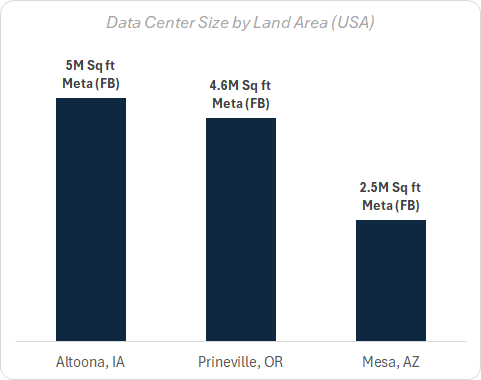
Major U.S. Data Center Hubs (by number of centers):
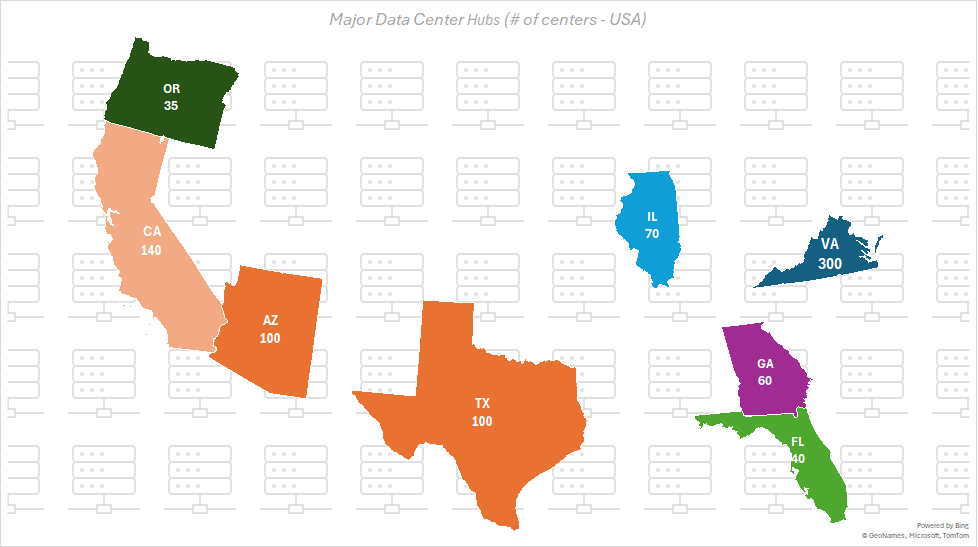
Data Center Water Consumption:
Water usage varies widely based on size, cooling tech, and climate. Here are some guidelines…
- Hyperscale: Up to 5 million gallons/day
- Medium-sized: 300,000 gallons/day
- Small: Often under 100,000 gallons/day
Cooling methods:
- Evaporative cooling: Efficient but water-intensive
- Chilled water systems: Closed-loop but still evaporative
- Air cooling: Ideal for cooler climates, low water use
- Liquid cooling: Direct-to-chip, emerging and highly efficient
Climate:
- Hot/dry regions (e.g., Arizona, Nevada): Higher water use
- Cooler regions: More air cooling, lower water footprint
Household Water Consumption:
- Median range: 240 to 360 gallons/day (based on 3-person households)
- Lower range: 100 to 200 gallons/day (smaller, efficient households)
- Influencing factors: appliance efficiency, climate, habits
- EPA offers tools to help reduce household water use
Number of U.S. Households:
- Current estimate (June 2025): 132.6 million
- Lower bound (2024): 132.2 million
- Upper projection (2026): 133.6 million
- Growth trend: steady increase, typically <1% annually
More Visuals:
Median figures used for all charts, specifically: total 133 million US households; total 4,200 US data centers; daily water consumption per household: 300 gallons; daily water consumption per data center: 2.5 million gallons. Median figures are calculated from upper estimates and lower estimates for all properties.
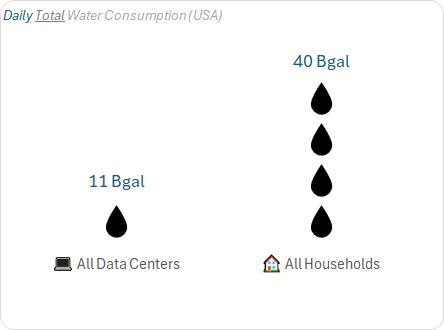
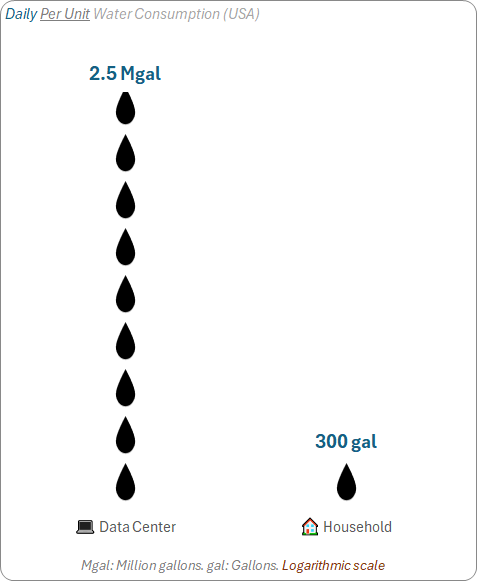
Logarithmic scale used above for best-fitting.
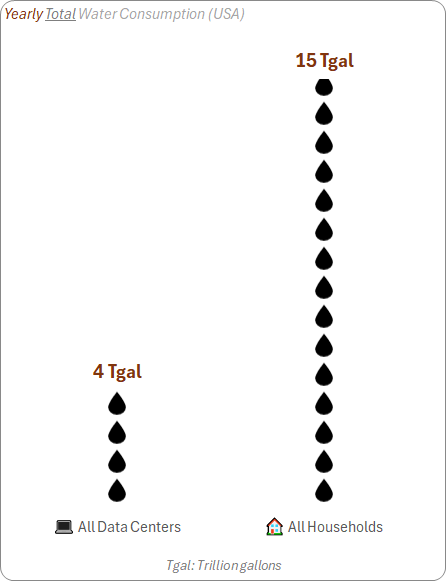
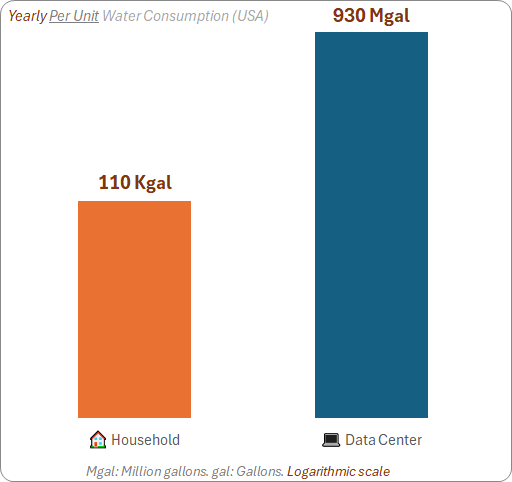
Logarithmic scale used above for best-fitting.
Per unit water usage by a typical data center appears extraordinary, however, in total hourseholds use up almost four times as much — this is due to the simple fact that there are far more households in the USA than datacenters (133 million households estimated vs median of 4,200 data centers).
Factoids:
- A single hyperscale data center can use more water in a day than 13,000 average households combined.
- Meta’s Prineville facility spans more square footage than 80 football fields.
- Evaporative cooling, while energy-efficient, can consume tens of millions of gallons annually.
- The average U.S. household uses roughly 300 gallons/day — less than 0.01% of a hyperscale DC’s peak usage.
- Data center water efficiency is improving, with innovations like direct-to-chip liquid cooling gaining traction.
Conclusion: Rethinking Digital Sustainability…
Water is the silent partner in our digital lives. As data centers expand to meet insatiable demand, their environmental footprint — especially water use — deserves closer scrutiny. Comparing these facilities to household consumption reveals staggering disparities and underscores the urgency of sustainable innovation. Whether through smarter cooling or better siting, the future of digital infrastructure must be as efficient as it is powerful.
Data Sources:
- U.S. Census Bureau (Household Estimates)
- Federal Reserve Economic Data (FRED)
- EPA WaterSense Program
- Industry reports on data center growth and cooling technologies